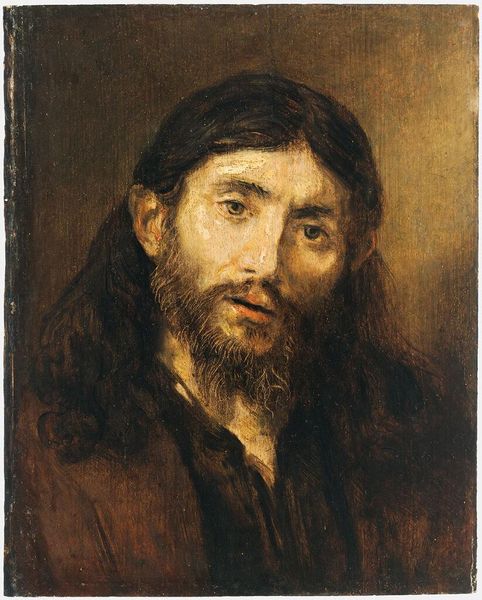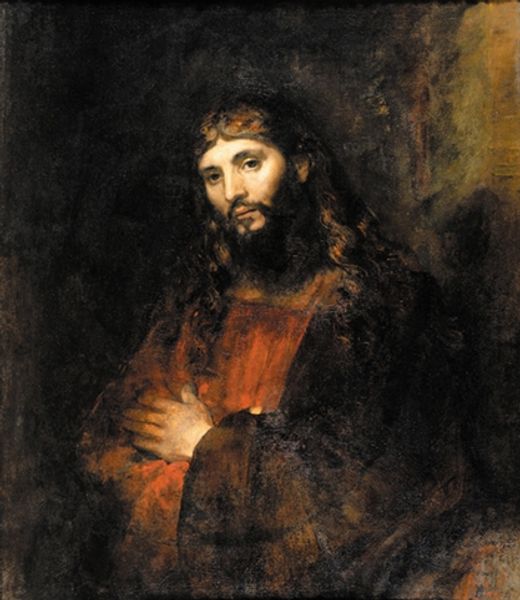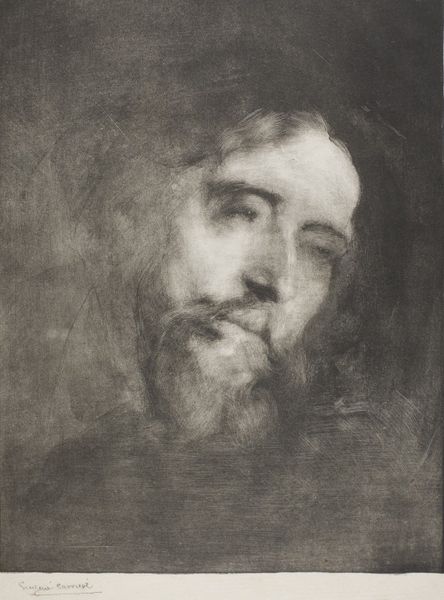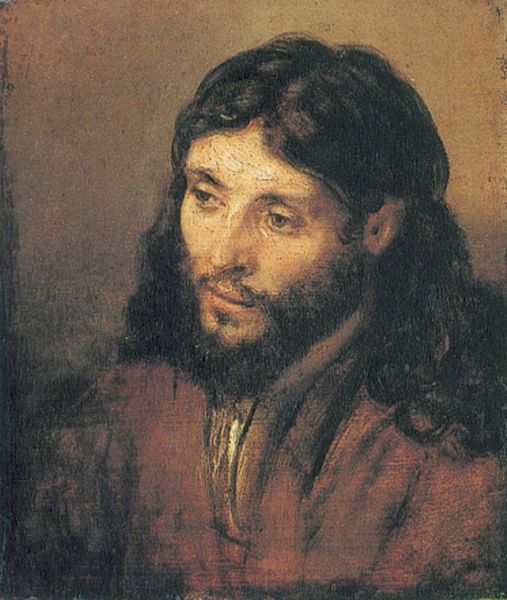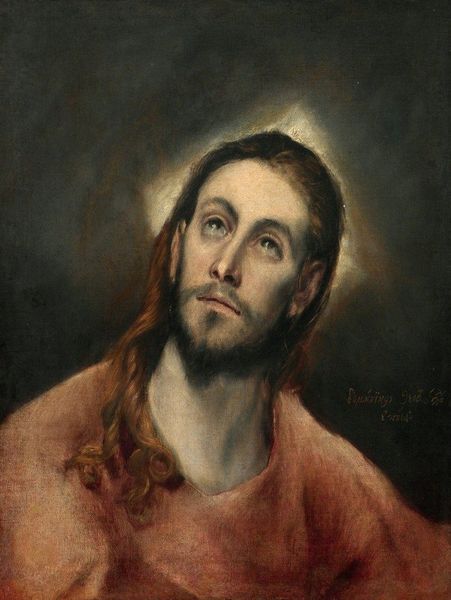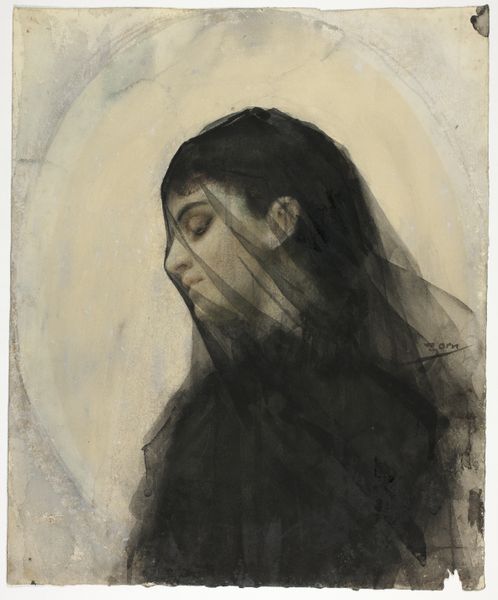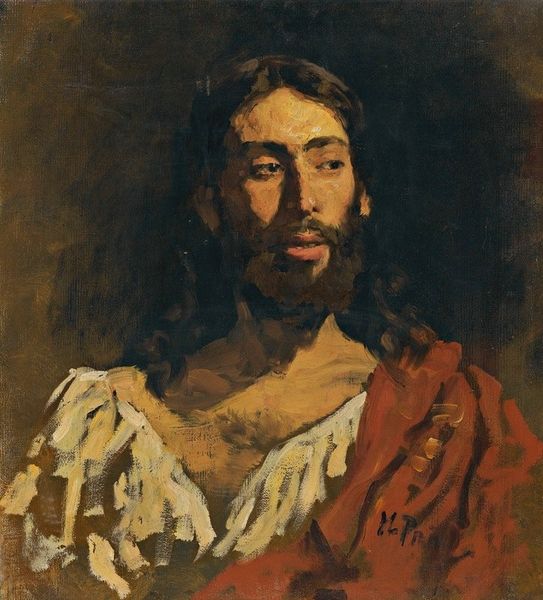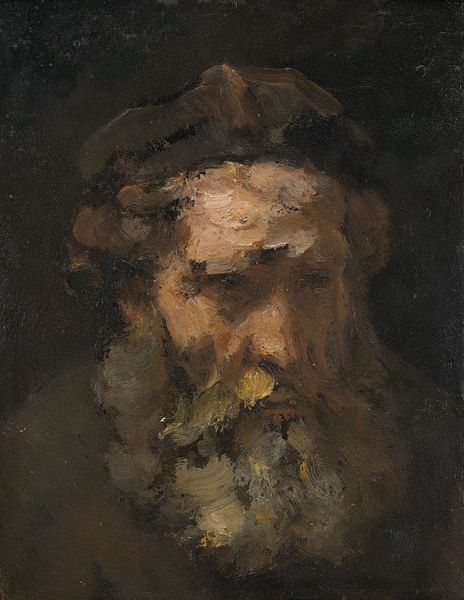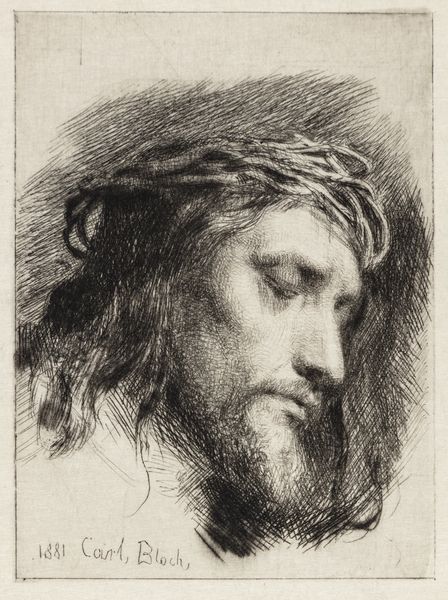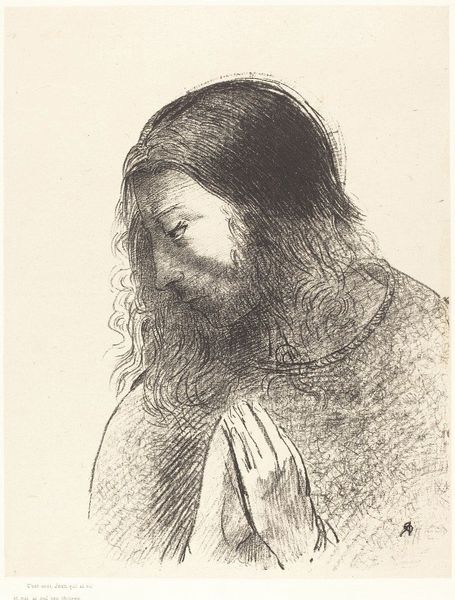
painting, oil-paint
#
portrait
#
baroque
#
dutch-golden-age
#
portrait
#
painting
#
oil-paint
#
chiaroscuro
#
history-painting
Copyright: Public Domain: Artvee
Curator: Standing before us is "Head of Christ," an oil painting attributed to Rembrandt van Rijn. Editor: The first thing that strikes me is the profound sense of quietude, almost resignation, emanating from the figure. It feels so incredibly intimate and solemn. Curator: Rembrandt's use of chiaroscuro, that dramatic contrast of light and shadow, is powerfully effective here. It draws the viewer's eye to the softly illuminated face, set against the darkened background. In many ways the shadows become their own character in the composition, drawing us to the contemplative moment. Editor: Right, and the soft, almost melancholic gaze seems to carry a weight of worldly sorrow. Knowing the historical context, that Rembrandt painted numerous biblical scenes during a time of social and religious upheaval, adds a layer of political significance. The painting evokes the suffering and compassion of the figure. Curator: I'm struck by the subtle realism achieved, not through perfect rendering, but rather, the emotive charge created via light, shadow and implied detail. What is revealed isn't an ideal of divine perfection, but a vision of imperfect humanity; of vulnerability and sorrow. This is in alignment with what cultural memory suggests to us. Editor: I agree. It challenges conventional, often idealized, portrayals of religious figures and humanizes the narrative in a society where hierarchical structures dominated religious and artistic representation. It really does democratize the icon through intimacy. Curator: His vision resonates with that of the old masters who sought to express truth through feeling. These paintings weren’t made merely to please aesthetically but to guide viewers along the emotional contours of human existence. Editor: Yes, art becomes a tool for social commentary, pushing for a more nuanced understanding of power and justice. And, it creates space for a deeper connection with this image. Curator: A space in which we consider, remember and reconnect with symbols from the past. Editor: Which we can perhaps use to create new meanings for the future.
Comments
No comments
Be the first to comment and join the conversation on the ultimate creative platform.
